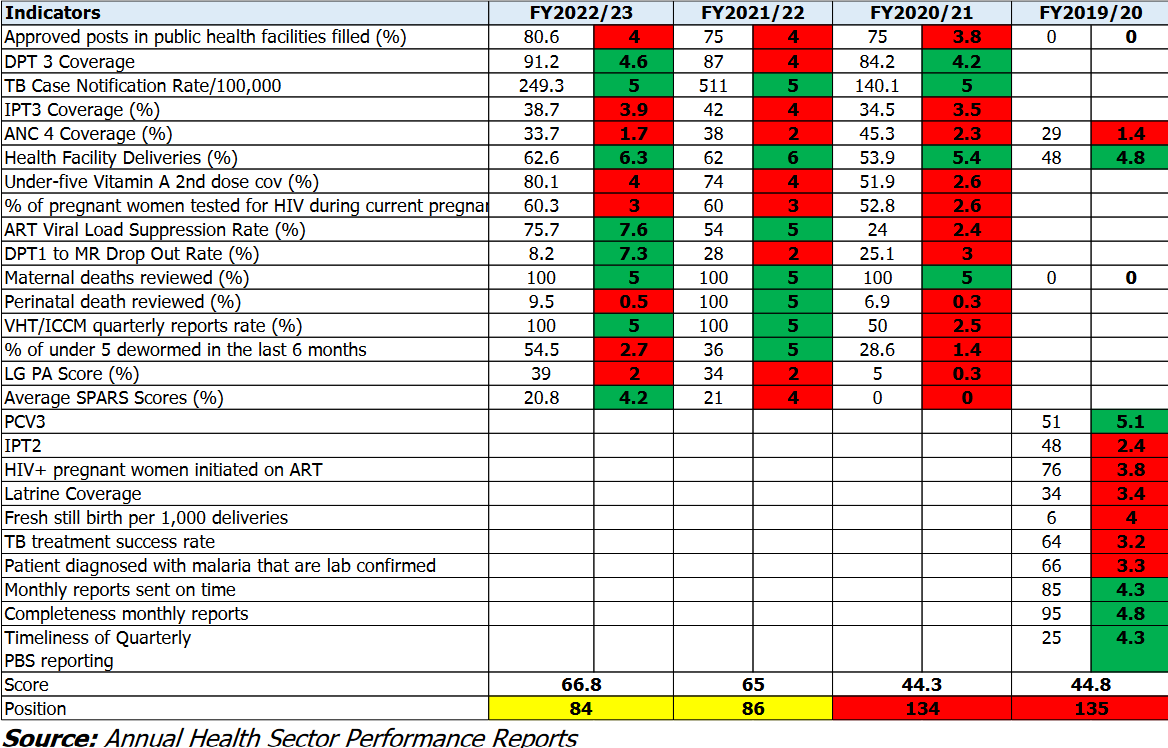Rising from the bottom: Karenga District’s DHIS2-Driven Health Ascension
According to the Ministry of Health’s FY2021/21 Annual Health Sector Performance Report, Karenga District ranked 134th out of 136 districts in Uganda due to low performance in key healthcare metrics linked to the National Sector Health Strategic Plan (FY2020/21-FY2024/25). The primary reason for this was insufficient use of DHIS2 generated data for decision making. Efforts to improve performance required thorough comprehension and support from key stakeholders to seamlessly integrate DHIS2 at different management levels, enabling evidence based decision making. A collaborative meeting, involving both district and political leadership, was organized to discuss and formulate strategic approaches. One key strategy involved creating DHIS2 accounts for the district health team members, allowing them to proactively monitor crucial metrics within their specific domains of authority. Additionally, hands on training sessions were conducted for district health teams and facility in charges to enhance their DHIS2 utilization skills. The subsequent adoption of DHIS2 played a vital role in improving preparations for quarterly health sector performance reviews and assessments. These strategies were formally endorsed and carefully implemented and monitored by the District Health Officer, who provided crucial feedback to various stakeholders within the district. This holistic approach aimed to create a healthcare environment relying on data for enhanced performance in the district’s health sector. With these measures in place, the district successfully adopted and utilized DHIS2, facilitating evidence based decision making and targeted healthcare interventions. According to the latest national health sector performance assessment completed in 2023, there were notable improvements in important health indicators in the district: a significant decrease in the dropout rate for the DPT1 MR1 vaccination, dropping from 25.1% in FY2020/2021 to 8.2% in FY2022/23; reporting for VHT/ICCM significantly improved, reaching 100% in FY2022/23 compared to 50% in FY2020/21; a significant improvement in the viral load suppression rate for ART clients, rising from 24% to an impressive 75.7%; the coverage of Vitamin A (2nd dose) for children under five indicated a significant increase, rising from 51.9% in FY2020/21 to an impressive 80.1% in FY2022/23; and the coverage for DPT3 indicated a significant increase, rising from 84.2% in FY2020/21 to 91.2%. The remarkable progress, thanks to the utilization of DHIS2 data, propelled the district 50 positions higher in the league table, showcasing an outstanding level of improvement. In conclusion, the journey of Karenga District’s healthcare performance, as outlined above, reflects how proactive measures, when implemented, driven by a collaborative effort improved performance.
Author: Mallo Paul Lokiru
Company/Organization: Karenga District Local Government, Uganda
Current Position: District Biostatistician
Email: plmallo1991@outlook.com
